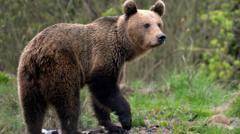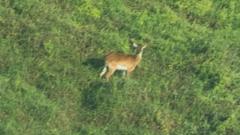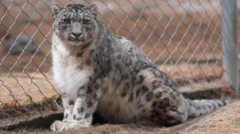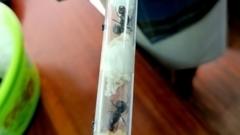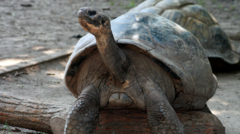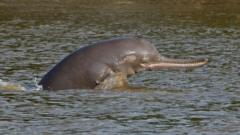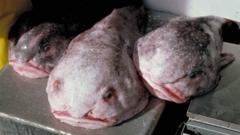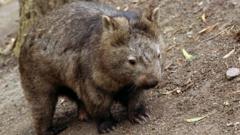Efforts to reintroduce these tiny molluscs mark a pivotal moment in conservation on Madeira's remote islands.
Restoring a Habitat: 1,329 Endangered Snails Released to the Wild
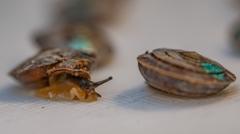
Restoring a Habitat: 1,329 Endangered Snails Released to the Wild
Conservationists breathe new life into Desertas Island’s critically endangered land snails.
More than 1,300 tiny, critically endangered land snails, bred in captivity, are slowly reclaiming their place in the wild after being released on a remote island in the Atlantic Ocean. These pea-sized snails, belonging to two species previously thought to be extinct for over a century, have been reintroduced to Desertas Island, close to Madeira, thanks to the relentless efforts of conservationists.
In earlier expeditions between 2012 and 2017, a small population of 200 surviving snails was discovered on the rocky cliffs of Deserta Grande island. This prompted a rescue mission that involved bringing the snails into captivity at various zoos across the UK and France, including Chester Zoo, where they were given a carefully monitored environment in a repurposed shipping container.
Desertas Island's unique ecosystem has suffered due to the introduction of invasive species like rats, mice, and goats by humans—predators that have severely reduced land snail populations. Conservationists have worked tirelessly to restore the habitat, which has led to the successful breeding of 1,329 snail offspring at Chester Zoo. These snails have been marked with color-coded identification dots using non-toxic materials to facilitate tracking and monitoring.
According to Dinarte Teixeira, a conservation biologist with Madeira's Institute for Nature Conservation and Forests, these markings will help in observing their dispersal patterns, growth rates, survival, and adaptability in their newly restored habitat on Bugio Island, a nearby nature reserve where invasive species have been eradicated.
Gerardo Garcia from Chester Zoo stated that this reintroduction is a crucial step in the broader recovery plan for the species. He expressed hopes that if the initial release is successful, more snails could follow next spring.
Heather Prince from Chester Zoo emphasized the ecological importance of these snails, noting their role in breaking down organic matter and enriching the soil, ultimately aiding plant growth and supporting the overall health of their natural habitat.
The work of these conservationists not only highlights the delicate balance of ecosystems but also underscores the potential for successful species recovery through cooperation and dedicated efforts.
In earlier expeditions between 2012 and 2017, a small population of 200 surviving snails was discovered on the rocky cliffs of Deserta Grande island. This prompted a rescue mission that involved bringing the snails into captivity at various zoos across the UK and France, including Chester Zoo, where they were given a carefully monitored environment in a repurposed shipping container.
Desertas Island's unique ecosystem has suffered due to the introduction of invasive species like rats, mice, and goats by humans—predators that have severely reduced land snail populations. Conservationists have worked tirelessly to restore the habitat, which has led to the successful breeding of 1,329 snail offspring at Chester Zoo. These snails have been marked with color-coded identification dots using non-toxic materials to facilitate tracking and monitoring.
According to Dinarte Teixeira, a conservation biologist with Madeira's Institute for Nature Conservation and Forests, these markings will help in observing their dispersal patterns, growth rates, survival, and adaptability in their newly restored habitat on Bugio Island, a nearby nature reserve where invasive species have been eradicated.
Gerardo Garcia from Chester Zoo stated that this reintroduction is a crucial step in the broader recovery plan for the species. He expressed hopes that if the initial release is successful, more snails could follow next spring.
Heather Prince from Chester Zoo emphasized the ecological importance of these snails, noting their role in breaking down organic matter and enriching the soil, ultimately aiding plant growth and supporting the overall health of their natural habitat.
The work of these conservationists not only highlights the delicate balance of ecosystems but also underscores the potential for successful species recovery through cooperation and dedicated efforts.


